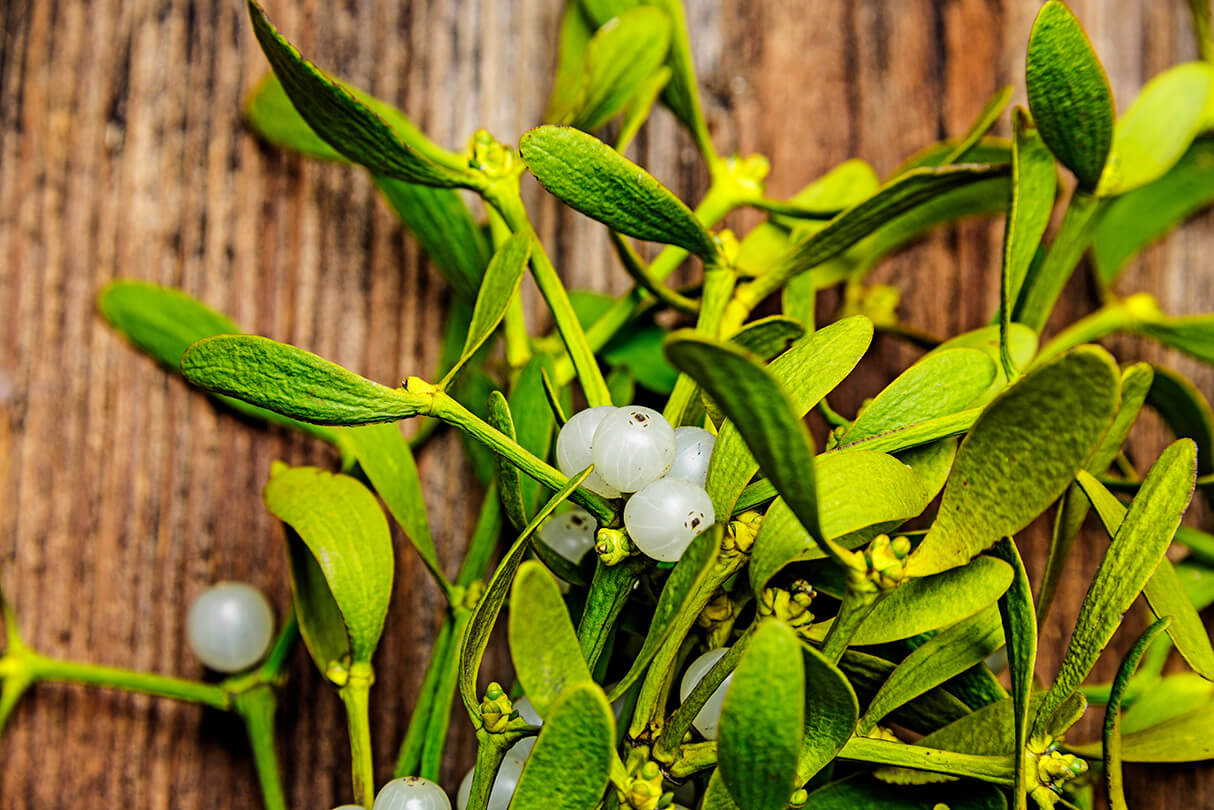Mistletoe Therapy

Mistletoe or scientifically known as Viscum Album, Viscum Coloratum, is a parasitic plant that grows on other perennial plants such as apple trees, oaks or pines. As you may have heard, Mistletoe is a popular seasonal decoration for your home in Europe and America, especially at Christmas. This is because many people believe that Mistletoe brings peace and happiness. However, aside from this auspicious meaning, research studies have shown that Mistletoe can be very effective in restoring health.
In many European countries, Mistletoe is used primarily in the treatment of cancer patients. It has been almost 100 years since medical studies began on the use of Mistletoe and the medicinal benefits it contains. However, over the last 50 years many scientific studies have proven that combined treatment with alternative remedies in parallel with conventional therapies such as radiation and chemotherapy have many benefits.
Mistletoe has been shown to be safe and effective in reducing the side effects of radiation or chemotherapy without compromising the therapeutic efficacy of the main treatment. Data show that Mistletoe has been used to treat breast cancer, pancreatic cancer, colon cancer and lung cancer. In addition, Mistletoe has also proven effective in the treatment of diseases such as HIV, hepatitis and age-related degenerative joint diseases.
Mistletoe has anti-inflammatory effects that affect cancer cells and is also able to stimulate the immune system to work more efficiently. Scientists have also found that the lectin in Mistletoe stimulates white blood cells called macrophages and dendritic cells, which actually helps to destroy cancer cells.
In many European countries, Mistletoe is used primarily in the treatment of cancer patients. It has been almost 100 years since medical studies began on the use of Mistletoe and the medicinal benefits it contains. However, over the last 50 years many scientific studies have proven that combined treatment with alternative remedies in parallel with conventional therapies such as radiation and chemotherapy have many benefits.
The immune-stimulating function also helps patients undergoing surgery. A retrospective study of nearly 800 cancer patients showed that Mistletoe can increase the patients’ window of immunity. For terminal cancer patients, taking Mistletoe can help reduce fatigue, reduce anorexia and, most importantly, improve quality of life, which in turn reduces anxiety and psychological stress.
The usual treatment methods for Mistletoe therapy are as follows:
– Subcutaneous injection (insulin injections for diabetics).
– Intravenous injections
Patients benefit from Mistletoe therapy as follows:
- Alleviates symptoms of side effects of chemotherapy
- Helps the patient to recover more quickly
- Reduces the risk of infection
- Helps the patient balance their internal clock (improving sleep, digestion and body temperature)
- Helps reduce the problem of nausea or vomiting
- Improves mood, reduces depression and stress
- Helps improve tolerance to pain from cancer
Adverse effects of Mistletoe therapy are not common and usually go away on their own. Occasionally, you may experience a headache, slightly elevated body temperature, or redness around the injection site. This usually occurs when high doses are used. In any case, the benefits outweigh the possible effects.
Contraindications to the use of Mistletoe are as follows:
- Persons with tumors in the brain or spinal cord
- Allergic reactions to Mistletoe in the past
- Pregnant and breastfeeding women
Cases requiring special attention are as follows:
- Patients with an infection
- Patients with an autoimmune disease
- Patients with abnormal thyroid function
- Patients with a history of latex allergy, allergy to certain fruits such as kiwi, bananas and avocados.
- People with an allergy to chitin, which is found in the shells of shrimp and squid

